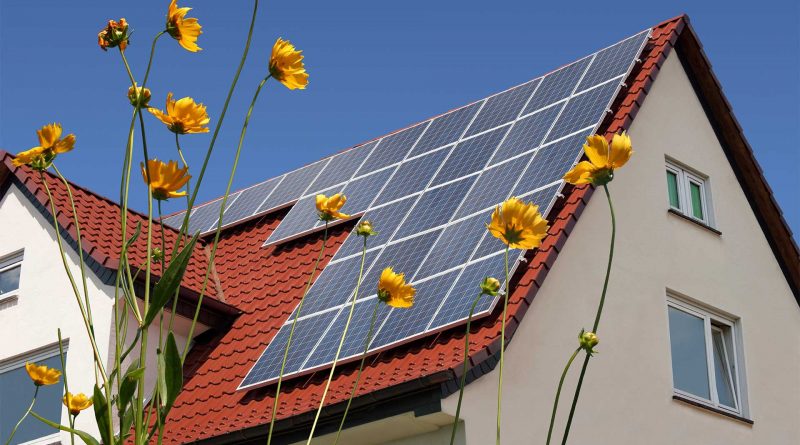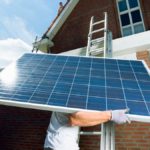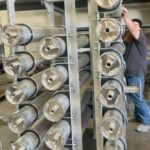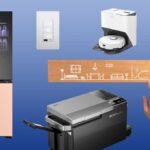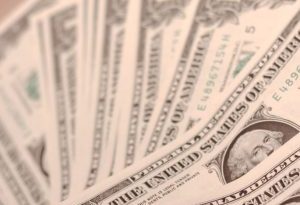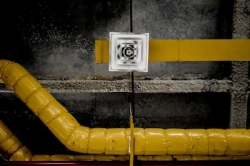Energy Efficient Mortgage (EEM) | What it is and how it works – The Mortgage Reports
Energy Disrupter

Use an energy efficient mortgage for your dream green home
An energy efficient mortgage or ‘green mortgage’ is a type of home loan used to buy or upgrade an environmentally-friendly home.
You can use an EEM to purchase an existing home that meets energy-efficiency standards, or to improve a home you’re buying or already own.
With low interest rates and plenty of loan options, an EEM can be a great way to finance energy efficient home improvements at a relatively low cost. And you’ll likely save a bundle on utility bills over the long term.
Check your energy efficient mortgage options (Jun 16th, 2021)
In this article (Skip to…)
What is the energy efficient mortgage program?
According to ENERGY STAR, a government-sponsored program, you can use an energy efficient mortgage “to purchase or refinance a home that is already energy efficient … or to finance energy efficient improvements to an existing home.”
Why use an EEM? Because energy-efficient home improvements can help you:
- Save money on energy costs
- Reduce your personal contribution to pollution and climate change
- Make the home more comfortable to live in
- Sometimes get a bigger mortgage. Lenders know that a green home costs less to run than others. And they may count those savings as extra “income”
- Increase the value of the home. Freddie Mac found, ” … better-rated homes are sold for 3-5% more than lesser-rated homes”
You can also use some EEM loans to increase the resilience of the home to natural disasters.
Suppose you live or are buying in an area prone to hurricanes, earthquakes, wildfires, or flooding. You could use one of these loans to help protect your property against their effects.
EEM benefits
ENERGY STAR says that 70,000 homeowners retrofitted their homes to meet energy efficiency standards in 2020. That brings the total since the program began in 1992 to 950,000.
Many new and recent homes are already ENERGY STAR compliant.
Indeed, 2 million were certified when their construction was completed. And nearly 100,000 were added in 2019 alone.
You could potentially use an energy efficient loan to buy one of these existing homes. Or, you might upgrade your current home via an energy-efficient refinance. Both are allowed under the energy efficient mortgage program.
Check your energy efficient mortgage options (Jun 16th, 2021)
How do energy efficient mortgages work?
Every major home loan agency has an energy efficient mortgage program, including Fannie Mae, Freddie Mac, FHA, VA, and USDA.
Each EEM program has its own rules and processes, and guidelines might vary by lender too.
But the overall process for buying or refinancing a home with an EEM loan is generally the same:
The EEM process
You start with a visit from a professional who will conduct a home energy assessment. This provides you with a rating for the home — whether you already own it or want to buy it — that defines how energy efficient it currently is.
Freddie Mac specifies home buyers will “work with your lender to find a licensed Energy Rater who will deliver an energy report, such as a Home Energy Rating System (HERS) or a Department of Energy Home Energy Score (HES) report.”
If your energy efficiency rating is already very good, you can buy or refinance the home as-is using an EEM loan.
If the energy rating is below your loan program’s required standards, your home energy rater or other trained professional should:
- Detail the energy efficient improvements they recommend
- Tell you what the home’s rating should be once improvements are completed
- Itemize the approximate costs of your energy upgrades
- Tell you how much you’re likely to save monthly and annually on your home’s utility costs
If you like what you hear, you can then apply for the mortgage loan.
An EEM lets you take out a larger loan than the new home’s actual value in order to finance your energy efficiency improvements.
You should expect a final inspection to make sure all the scheduled work has been completed to an acceptable standard. The lender might hold back some funds and release them only when that’s confirmed.
Energy efficient mortgage programs
There are various EEM programs for home buyers and homeowners. These include:
- Fannie Mae HomeStyle Energy Mortgages
- Freddie Mac GreenCHOICE Mortgages
- FHA Energy Efficient Mortgage
- VA Energy Efficient Mortgage
- USDA mortgages
Each program has its own requirements (see below). But one shared feature is that all EEM programs will require your home improvements to be cost-effective. In other words, your energy savings must justify your costs.
Conventional energy efficient mortgage
Conventional loans are not backed by the government. That includes “conforming loans”: mortgages that meet standards set by Fannie Mae and Freddie Mac.
Any individual lender is free to set up its own conventional EEM mortgage program. But most are likely to offer Fannie’s HomeStyle Energy Mortgage or Freddie’s GreenCHOICE Mortgage.
With these products, you can spend up to 15% of the “as completed” value of the property (what the appraiser thinks the home will be worth when work has been finished) on energy efficient improvements.
For instance: If the appraiser believes the home will be worth $350,000 when energy efficiency improvements are completed, you might be able to spend up to $52,500 on those upgrades.
Conforming loan EEM requirements
Fannie and Freddie have nearly identical requirements for borrowers:
- Minimum down payment 3%
- Credit score of 620 or higher
- A debt-to-income ratio (DTI) of 45% or below
- An income that’s steady and reliable
As long as you’re legally resident in the US, you can apply for the HomeStyle Energy or GreenCHOICE mortgage program.
These loans are designed to help home buyers and owners improve the energy efficiency of an existing home and save on utility costs.
They are available either when you’re buying a home (a home purchase mortgage) or if you want to upgrade your existing one (refinance).
Check your conventional loan eligibility (Jun 16th, 2021)
FHA energy efficient mortgage
The Federal Housing Administration (FHA) also offers an energy efficient mortgage program.
The FHA doesn’t seem to set formal maximums for spending on energy improvements — provided they’re cost effective.
But it does say, “An FHA-approved lender can access FHA’s EEM Calculator to determine the dollar maximum amount that a borrower can finance for energy improvements.” So get your lender to run those numbers early on in the process.
Minimum requirements for the FHA EEM loan are the same as other FHA mortgages:
- Minimum down payment 3.5%
- Credit score of 580 or higher (sometimes 500 with a 10% down payment)
- A debt-to-income ratio of 50% or lower
- An income that’s steady and reliable
- The home will be your primary residence
However, individual lenders can impose stricter eligibility requirements. So shop around with different lenders to find sympathetic ones.
Again, as long as you’re legally resident in the US, you can apply for one of these.
Check your FHA loan eligibility (Jun 16th, 2021)
VA energy efficient mortgage
The VA EEM program — backed by the U.S. Department of Veterans Affairs — is only available to veterans, active-duty service members, or members of closely related groups. The last includes widows or widowers of someone who was eligible.
The VA energy efficient mortgage program has some unique rules compared to other EEM loans.
- If you’re spending less than $3,000 on a modest project, you won’t need a home energy assessment (HEA), according to Veterans United. You just have to submit a quote from a reputable contractor along with manufacturers’ specifications for the products you want to use
- If you want to spend more — up to $6,000 — you will need a home energy assessment
- You may be able to fund energy efficient improvements worth more than $6,000 with a VA loan (though not for second-tier entitlements). But expect more challenges from lenders
VA EEM requirements
Qualifying borrowers should consider the VA EEM loan before any other type. Because many believe these to be the best mortgages of all. And you can see why:
- Minimum down payment 0%
- No minimum credit score (but most lenders impose one, often in the 580-640 range)
- A debt-to-income ratio of 41% or lower
- An income that’s steady and reliable
- The home will be your primary residence
Perhaps the biggest advantage is that VA loans typically have the lowest mortgage rates available. And, once you’ve paid your VA funding fee, you’ll never have to pay any mortgage insurance.
Check your VA loan eligibility (Jun 16th, 2021)
USDA mortgages
You may be in line for a USDA EEM loan if you have a low or moderate income, and you wish to buy a home in an area designated as ‘rural’ by the U.S. Department of Agriculture (USDA).
The USDA doesn’t differentiate between energy efficient mortgages and its standard loans.
Rather, you apply for a USDA loan and its guidance says, “Loan funds can be used for purchase and installation of measures to promote energy efficiency, such as insulation, doublepaned glass, and solar panels.”
USDA loans are attractive if you qualify:
- Minimum down payment 0%
- No minimum credit score (but most lenders impose one, often 640 or higher)
- A debt-to-income ratio of 41% or lower
- An income that’s steady and reliable
- The home will be your primary residence
You will have to pay mortgage insurance with one of these — both on closing and annually. But modest premium rates mean you may pay less than with many other loans.
Talk through your energy efficiency requirements with your lender to see how much you can spend.
Check your USDA loan eligibility (Jun 16th, 2021)
What lenders do energy efficient mortgages?
Any lender that offers the type of loan you want (conforming, FHA, or VA) should be able to handle an EEM easily. But lenders aren’t obliged to offer them.
So, when you’re whittling down your short list of possible mortgage lenders, ask each about its policy on EEMs.
Even if the first lender you talk to offers EEMs, it’s still worth shopping around. Borrowers often save many thousands of dollars by comparing quotes from multiple lenders. And that could make the time you spend finding your best deal the highest hourly rate you’ll ever earn.
How much money can I save with an EEM?
The amount of money you can spend on energy upgrades — and how much they’ll save you — varies from one homeowner to the next.
But let’s look at just one example.
This is a case study currently on the U.S. Department of Housing and Urban Development’s website. It concerns Patricia and Mynette Theard when they were first-time buyers in California.
HUD says:
- “A home energy assessment on the home recommended $2,300 in energy improvements including ceiling, floor and furnace duct insulation, plus a setback thermostat
- The lender set aside an extra $2,300 for the improvements, bringing the total loan amount from $142,500 to $144,800
- The loan closed, the Theards moved in, and the improvements were installed
- The monthly mortgage payments increased by $17, but the Theards are saving $45 each month through lower utility bills”
That’s a total savings of $28 per month, which might seem modest. But it adds up to $330 per year and $10,000 over the course of a 30-year fixed-rate mortgage loan.
When you’re calculating the cost vs. benefit of an EEM home loan, make sure you consider the long-term savings depending on how long you plan to stay in the house.
Mortgage rates for EEMs
There’s no reason you should pay a higher mortgage rate for an energy efficient home loan.
You don’t present a higher risk to lenders with this type of loan. Indeed, the savings you make on utility bills should make it easier for you to stay on top of your monthly mortgage payments.
As a result, EEM loans can sometimes be easier to qualify for than other loan types. And borrowers have access to today’s low interest rates.
Verify your new rate (Jun 16th, 2021) Original Source: https://themortgagereports.com/75750/energy-efficient-mortgage-guide-va-fha-conventional

